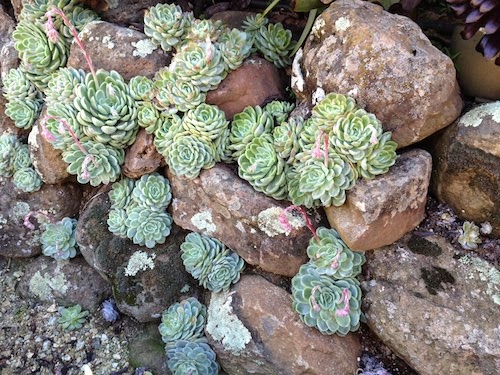 |
| Dudleya pulverulenta is a gorgeous California native |
The severe drought of the last three years has demanded a revised approach to gardening and garden design in California. If you haven't replaced your lawn yet, consider taking advantage of incentives and rebates. Check your local city web pages.
Dialing it up a Notch
Having a landscape with low to moderate water needs in a severe drought isn't good enough, so I've been dialing up the drought tolerance of my garden. Besides, the less I'm watering other stuff, the more edibles I can grow.
And it's not that I'll be deprived of a rewarding garden, it just takes some focused plant choices. To keep it simple, collecting plants from the salvia (sages) and succulents groups offers lots of showy and water-wise choices, including drought tolerant California natives. As a bonus, saliva and succulent flowers are potent magnets for pollinators, especially hummingbirds and bees of various types.
A Sage for Every Garden
 |
| Pineapple Sage, Salvia elegans, is a hummingbird magnet |
 |
| Many sages flower almost all year round |
If you are choosing sages at your local nursery, make sure to check on the water needs of each specific variety before you plant them in your garden. They'll reward you with abundant flowers and fragrant foliage with very little upkeep. Most sages appreciate an annual pruning to renew foliage and flowers for the next season.
Succulent Envy
 |
| A recent shopping trip to Succulent Gardens in Castroville |


